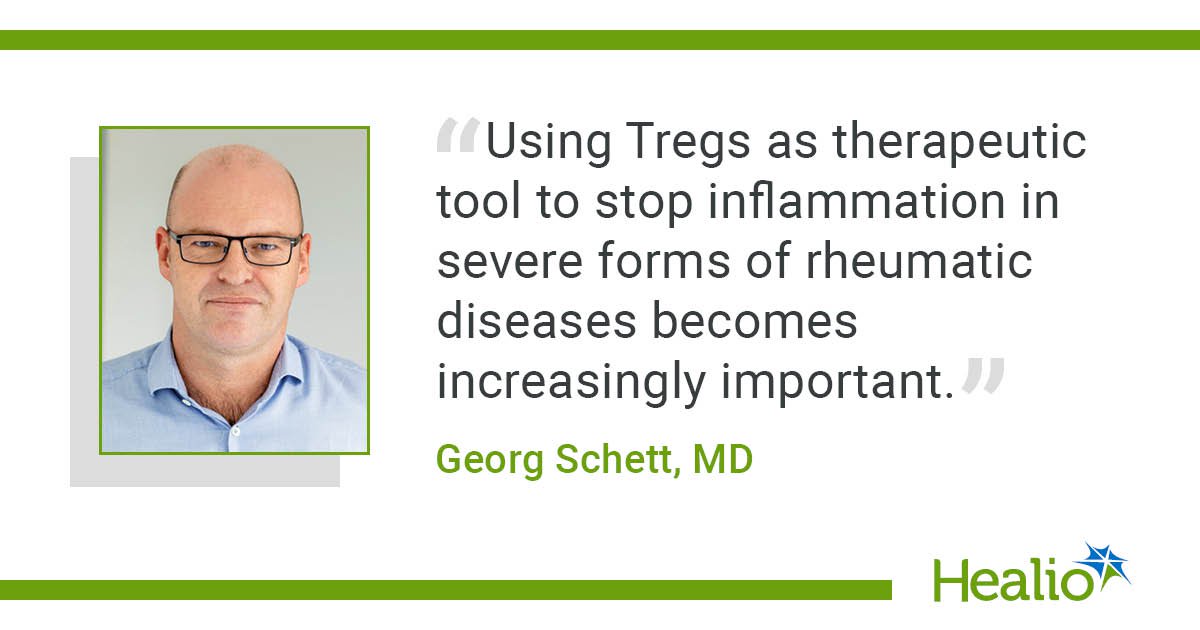September 19, 2025
7 min read
Key takeaways:
- Multidimensional sleep health may be an avenue to optimizing cardiometabolic health.
- The American Heart Association recently published a scientific statement that outlines the implications of sleep for cardiometabolic health.
Editor’s Note: This is part one of a three-part Healio Exclusive series on the intersection of sleep and cardiometabolic health.
Adequate sleep duration is essential for overall health, but other components of sleep — a consistent bedtime, uninterrupted sleep, daytime function — can also contribute to cardiometabolic health and associated risk factors.

Taking a multidimensional view of sleep health with targeted goals for each individual may have implications for cardiometabolic health, according to an American Heart Association scientific statement published this year in Circulation: Cardiovascular Quality and Outcomes. Variations in sleep health have been linked to elevated cardiometabolic risk factors and poorer health outcomes, particularly among individuals in under-resourced communities and those affected by adverse social determinants of health.
“Many components of sleep impact cardiometabolic health through alterations in circadian rhythms,” Marie-Pierre St-Onge, PhD, professor of nutritional medicine and director of the Center of Excellence for Sleep and Circadian Research at Columbia University Irving Medical Center and chair of the AHA scientific statement writing committee, told Healio.
With time, “we are learning more about sleep and its impact on cardiometabolic health,” St-Onge said. “In 2016, I chaired a statement on sleep duration and sleep quality in cardiometabolic health. At that time, we highlighted the knowledge that we had, research gaps and where the field should go from there.”
The 2016 statement, published in Circulation, underlined the associations between sleep duration and sleep disorders with adverse cardiometabolic risk, the negative impact of sleep restriction on energy balance and how treating sleep disorders may provide clinical benefits, such as blood pressure reduction.
That statement helped “motivate the field to get more information to be able to provide data that then allowed the AHA to include sleep duration as an eighth metric in Life’s Essential 8,” St-Onge said.
As Healio previously reported, the AHA in 2022 updated its Life’s Simple 7 measures of CV health — diet, physical activity, smoking, body weight, lipids, blood glucose and BP — to now include sleep, renaming it Life’s Essential 8.
“With new information about how regularity of sleep is relevant for health and how different sleep stages are also important for cardiometabolic health, it was time to dig deeper and let people know that sleep is not just one dimension,” St-Onge said.

Julio Fernandez-Mendoza
“Good sleep health can, and should, be promoted at the population, community, neighborhood, workplace, school, collective and individual levels,” Julio Fernandez-Mendoza, PhD, DBSM, FAHA, the Edward O. Bixler, PhD, Professor of Psychiatry and Behavioral Health and professor of public health sciences and neuroscience & experimental therapeutics at Pennsylvania State University College of Medicine and member of the AHA scientific statement writing group, told Healio.
Multidimensional sleep health
Optimal sleep health goes beyond just sleep duration, St-Onge said. According to the scientific statement authors, “conceptualizing sleep as multidimensional emphasizes that sleep is not a unitary physiologic experience, and multiple sleep dimensions affect functioning in various ways.”
“To make strong recommendations, we need to know that the impact of sleep is causal. So we’ve done that quite well in relation to sleep duration. There are a lot of studies that have shown that if you restrict sleep, you increase blood pressure, insulin resistance, inflammation and many other cardiometabolic risk factors,” St-Onge said. “But now we need to know the same for these other components like regularity of sleep, timing of sleep, efficiency, sleep stages and how alterations in those parameters can have an impact on cardiometabolic risk factors.”

The scientific statement classifies eight individual dimensions of multidimensional sleep health. This includes less-discussed and less-studied components that contribute to overall physical and mental health and well-being, according to an AHA press release.
- Sleep duration is defined as number of hours of sleep per night. Multiple studies have shown that less than 7 hours of sleep per night raises the risk for atrial fibrillation, metabolic syndrome and nighttime BP that does not decline during sleep. On the other end, research has linked more than 9 hours of sleep per night to increased risk for metabolic syndrome, atherosclerotic CVD, stroke and death.
- Sleep timing is defined as the time at which sleep is obtained. Research suggests cardiometabolic risk can change based on a person’s sleep timing. For example, a bedtime of midnight or later has been linked to increased risk for overweight or obesity, insulin resistance and hypertension, compared with an earlier bedtime. However, high-quality research on sleep timing and cardiometabolic risk is lacking.
- Sleep regularity/rhythmicity is defined as the stability of an individual’s sleep-wake patterns over time. For example, social jetlag, which occurs when the number of sleep hours changes between workdays and weekends, is associated with a 20% greater risk for overweight or obesity and day-to-day variability is associated with increased risk for CVD, hypertension, inflammation and obesity. Irregular sleep timing is linked to higher risk for type 2 diabetes, even in people who had sufficient sleep. Consistency in sleep-wake timing has been linked to up to a 57% lower risk for CV death.
- Sleep satisfaction/quality is defined as an individual’s perception of how well they slept. Research suggests that lower sleep satisfaction is linked to higher BP, coronary heart disease and nighttime BP that does not decline during sleep.
- Alertness/daytime functioning is defined as an individual’s ability to maintain an optimal vigilance throughout the day. Daytime sleepiness has been linked to CVD, CHD, stroke and death. Moreover, certain CV risk factors such as obesity, diabetes, smoking and sleep apnea have been linked to increased risk for daytime sleepiness.
- Sleep efficiency is defined as how easily sleep is initiated and maintained. This includes time it takes to fall asleep, how many times an individual wakes throughout the night and the amount of time spent awake after falling asleep. Disturbances in sleep efficiency and continuity are linked to greater risk for AF, myocardial infarction, hypertension and insulin resistance.
- Disturbed sleep is defined as the presence of sleep disorders, such as sleep-disordered breathing and chronic insomnia, as well as use of sleep medications or sleep-enhancing devices.
- Sleep architecture is defined as the amount of time spent in non-rapid eye movement (REM) sleep, which includes light and deep sleep, or REM sleep, which is deep sleep. Research has shown that interruptions in non-REM sleep conferred higher levels of insulin resistance compared with uninterrupted sleep.
“How you sleep affects downstream behaviors that are relevant for cardiometabolic health. If you’re sleeping at different times of the day or if you’re sleeping during the day vs. the night, you may not be as active or be eating at the right time of day when your body is expecting food and able to process and metabolize that food,” St-Onge said. “We also know that some of these sleep factors are related to different cardiometabolic risk factors associated with increased metabolic syndrome and components of metabolic syndrome like blood pressure, triglycerides, glucose and weight status.”Since sleep health is itself multidimensional, so too should be the treatment once issues arise, such as behavioral interventions for poor sleep efficiency or physiological interventions for abnormal sleep-related breathing, Fernandez-Mendoza said.
Barriers to healthy sleep
“Sleep health is not equitable,” according to the scientific statement.
“[Addressing sleep] is multidisciplinary in terms of medical specialties, but it’s also multidisciplinary in terms of socioeconomic involvement. Sleep is not necessarily an individual experience,” St-Onge said. “Your sleep may be impacted because of your partner’s sleep, your children’s sleep and other external factors beyond your control, in terms of social and societal and political environments that make it so that some people may have better opportunities for good sleep, whereas others may not.”The statement illustrated a social ecological model, breaking down the social determinants of sleep health into three categories: societal-, social- and individual-level factors.
- Societal-level factors that could adversely impact sleep and thus cardiometabolic health include a 24/7 society, technology, discrimination, natural environment and more.
- Social-level barriers to healthy sleep include home, family, work, school, neighborhood, religion, culture and social networks.
- Individual-level factors preventing healthy sleep may include genetics, beliefs, attitudes, behaviors, physiology, psychology health and personal choices.
A study published in Nature and Science of Sleep in 2019 showed people from historically underrepresented racial and ethnic groups were more likely to have short sleep duration, worse sleep continuity, less sleep satisfaction, irregular sleep, high sleepiness and undiagnosed sleep orders compared with white individuals.
“There are health disparities in sleep health, with historically marginalized communities being the ones most at risk for poor sleep health,” Fernandez-Mendoza told Healio. “[Poor sleep] can come from the communities lived-in, given that sleep does not occur in isolation from your societal environment or neighborhood.”
In addition, data published in the European Journal of Investigation in Health, Physiology and Education in 2022 indicated that individuals with higher socioeconomic status had more opportunities for optimal multidimensional sleep health compared with those with lower socioeconomic status.
“Our AHA scientific statement is also a call to focus on sleep health as a positive phenomenon, highlighting that good sleep health, like physical health, is a multidimensional construct and that efforts should be put on promoting good sleep health, as defined on the statement,” Fernandez-Mendoza told Healio.
Editor’s Note: Part two of this Healio Exclusive series will delve into the underlying mechanisms of sleep’s impact on cardiometabolic health .
We want to hear from you:
Healio wants to hear from you: How are you addressing your patients’ sleep health in clinical practice? Share your thoughts with Healio by emailing the author at sbuzby@healio.com or tagging @CardiologyToday on X. We will contact you if we wish to publish any part of your story.
References:
For more information:
Julio Fernandez-Mendoza, PhD, DBSM, FAHA, can be reached at jfmendoza@psu.edu.
Marie-Pierre St-Onge, PhD, can be reached at ms2554@cumc.columbia.edu.










